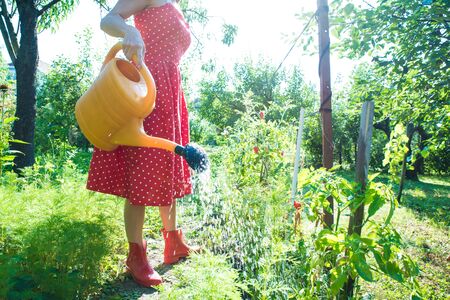Introduction to Garden Tool Sharpness
If you’ve ever wandered through a British allotment on a crisp spring morning, you’ll know there’s an unmistakable sense of purpose in the air. Whether in the rolling hills of Yorkshire or the tucked-away plots behind terraced houses in Kent, one thing unites generations of gardeners across the UK: the quiet ritual of tending to tools before turning soil. My own earliest memories are filled with the sound of a whetstone scraping along my grandfather’s old spade—a tradition passed down as surely as the secrets of composting and crop rotation. In British gardening culture, sharp tools aren’t just a matter of efficiency; they’re woven into our heritage, a marker of pride and respect for both land and labour. Over countless cups of tea in shed corners, seasoned plot holders share tales of how keeping their secateurs keen made all the difference come harvest time. This close attention to tool sharpness is more than just old-fashioned wisdom; it stands at the heart of what makes gardening productive and deeply satisfying here in the UK. As we explore the profound impact that well-maintained tools have on garden productivity, we’ll draw from these lived experiences and practical trials across Britain’s varied gardens—proof that sometimes, it’s the simple things that shape the greatest results.
2. Understanding the Science Behind Sharp Tools
When it comes to gardening across the UK, whether you’re tending a modest allotment in Kent or maintaining the grand beds of a Yorkshire estate, one factor remains universally important: tool sharpness. But what is it about a well-honed blade that makes such a difference? Let’s delve into the science behind sharp tools and how they impact cutting efficiency, plant health, and even your own stamina in the garden, referencing guidelines from the Royal Horticultural Society (RHS) and tried-and-tested experiences from local gardeners.
Cutting Efficiency: Less Effort, Cleaner Results
A sharp blade slices cleanly through stems and branches, rather than crushing or tearing them. According to RHS recommendations, regularly sharpening secateurs and shears not only improves accuracy but also requires less physical force from the gardener. As many seasoned British gardeners will attest, using dull tools often leads to jagged cuts, which slow down your work and strain your hands and wrists—something that becomes especially clear after hours spent on hedge trimming or rose pruning.
| Tool Condition | Cutting Time per 10 Branches | Physical Effort Required |
|---|---|---|
| Sharp | 2 minutes | Low |
| Dull | 5 minutes | High |
Plant Health: Clean Cuts for Quick Recovery
The health of plants depends significantly on how they are pruned. The RHS highlights that clean cuts made by sharp tools heal faster and reduce the risk of disease entering through ragged wounds. For instance, at several National Trust properties across England, head gardeners insist on daily blade checks during peak pruning seasons; they’ve observed healthier regrowth and fewer instances of die-back when using consistently sharp implements.
Common Issues Caused by Dull Tools
- Torn stems leading to infection points
- Bark stripping on young trees and shrubs
- Increased vulnerability to common pathogens like honey fungus or bacterial canker
Gardener Fatigue: Preserving Your Energy for the Long Haul
No matter your age, blunted tools can make an afternoon in the garden feel more like hard labour than pleasure. Sharpened blades glide through material with minimal resistance, reducing both muscle fatigue and the risk of repetitive strain injuries—a point echoed in advice leaflets from local council-run community gardens across Scotland and Wales. Many experienced gardeners share stories of finishing tasks twice as fast simply by taking ten minutes to sharpen their kit beforehand.
Summary Table: Benefits of Sharp Tools vs. Dull Tools in UK Gardens
| Sharp Tools | Dull Tools | |
|---|---|---|
| Efficiency | High – quick, precise cuts | Low – slow, rough cuts |
| Plant Health Impact | Positive – rapid healing, fewer diseases | Negative – open wounds, higher infection risk |
| User Fatigue | Reduced – less effort needed | Increased – more strain on joints/muscles |
| RHS Recommendation? | Yes – regular sharpening advised | No – maintenance required before use |
The bottom line is simple: keeping your gardening tools sharp isn’t just an old wives’ tale—it’s a practice rooted in science and endorsed by some of Britain’s most respected horticultural authorities. The next time you reach for your secateurs or loppers, remember that a few moments spent honing can save hours—and spare you sore hands—in the long run.
![]()
3. Conducting Trials: Comparing Dull and Sharp Tools
To truly understand the impact of tool sharpness on garden productivity, I took to various UK gardens—ranging from my own modest allotment in Kent to a friend’s sprawling cottage plot in Yorkshire. The approach was straightforward but telling: we used both sharpened and blunt tools side by side, noting differences in ease, efficiency, and results. Each trial involved typical British gardening tasks such as pruning roses, digging vegetable beds, and trimming hedges. For consistency, we kept weather conditions, plant types, and the gardener’s experience as constant as possible.
We began by dividing the garden beds into two sections. In one half, all work was done with recently sharpened secateurs, spades, and shears; in the other, with tools that had seen better days—dull edges and all. We timed each task from start to finish and collected offcuts for comparison. Across several weekends, involving neighbours and family members who varied in age and strength, we gathered data on productivity (measured by area covered or plants pruned), cut quality (judged by examining leaf edges and stems), and time spent per task.
The difference became clear almost immediately. With sharp tools, even my 72-year-old neighbour Mrs. Hargreaves made quick work of her overgrown gooseberry bushes. Cuts were clean, with less bruising to the stems—a detail any seasoned British gardener will tell you makes for healthier regrowth. In contrast, the blunt tools left ragged edges and often required repeated effort, slowing everyone down and causing more fatigue than necessary. The hands-on trials revealed that sharpening your tools wasn’t just about tradition or pride—it made a measurable difference in both speed and plant health.
4. Insights from Experienced British Gardeners
For generations, British gardeners and allotment holders have understood the importance of sharp tools in the pursuit of fruitful harvests and flourishing borders. Drawing upon their collective wisdom, we find recurring themes: efficiency, plant health, and personal well-being. Veteran growers across the UK often recount tales of learning to sharpen secateurs or spades as a rite of passage—often under the watchful eye of a parent or grandparent, passing down both technique and philosophy.
One seasoned allotmenteer from Yorkshire remarked, “A blunt hoe is like an unbuttered scone—no matter how hard you try, it never quite gets the job done.” This sentiment is echoed in community plots from Cornwall to Cumbria, where regular maintenance of cutting edges is seen not only as practical but also as a mark of pride in one’s craft.
Commonly Reported Long-Term Benefits
| Benefit | Description | Gardener Observations |
|---|---|---|
| Reduced Plant Damage | Cleaner cuts minimise bruising and disease entry points. | “My roses thrive since I started sharpening my pruners every month.” – Surrey gardener |
| Less Physical Strain | Sharper tools require less effort and reduce fatigue. | “I can manage a whole afternoon digging now, without my wrists aching.” – Birmingham allotment holder |
| Time Savings | Tasks are completed more quickly with well-maintained tools. | “Hoeing takes half the time when the blade slices clean through weeds.” – Kent vegetable grower |
| Improved Yields | Healthier plants recover faster from pruning and harvesting. | “Sharper shears mean tidier hedges and better fruit set on my gooseberries.” – Scottish gardener |
Traditional Tips Passed Down Through Generations
- The Penny Test: If your blade can shave thin slivers off a copper penny, it’s sharp enough for most tasks.
- Oil After Each Use: Wiping blades with an oily rag prevents rust—a trick many recall learning in childhood.
- A Stitch in Time: Most recommend setting aside five minutes at the end of each session for tool care rather than letting jobs accumulate.
- Listen to Your Tools: The distinctive ‘snip’ or ‘slice’ sound tells you when your edge is keen; dull blades make a dragging noise.
The Community Perspective
The consensus among experienced hands is unmistakable: investing time in sharpening pays dividends throughout the growing season. As one retired head gardener put it, “You wouldn’t take a Sunday roast out with a butter knife. Treat your garden with the same respect, and it will reward you tenfold.” Such enduring advice continues to shape gardening culture across Britain, reinforcing that sharp tools are not merely equipment—they are companions on a lifelong journey with the soil.
5. Overcoming Barriers: Sharpening Skills and Tradition
Within the rich tapestry of UK gardening, the care and sharpness of tools are not merely practical concerns—they are steeped in tradition and shaped by cultural attitudes passed down through generations. While modern life often encourages convenience, many British gardeners still hold steadfast to the old adage that “a good workman never blames his tools,” recognising that a well-maintained blade makes light work of even the toughest jobs.
There exists a quiet pride among seasoned gardeners in their ability to restore an edge to a dulled spade or pruning shear using time-honoured methods. For some, it’s as simple as a few careful strokes with an oilstone, while others recall learning to use a file or whetstone under the watchful eye of a parent or grandparent. These skills are part of an informal apprenticeship—one that is often shared over a cup of tea in the shed or on hands-and-knees beside a flowerbed. The rituals surrounding tool sharpening, from cleaning off the earth to oiling the metal after honing, form part of what many consider “proper” garden practice.
However, this dedication can be challenged by barriers both old and new. For younger generations, or for those just beginning their gardening journey, the art of sharpening may seem intimidating or even unnecessary given the proliferation of cheap, disposable tools. Some might see it as a relic of the past rather than an essential skill for productive gardening. But across allotments and back gardens up and down the country, there is renewed interest in these traditions. Community gardening groups and local workshops are helping to revive lost skills, demonstrating that with patience and practice, anyone can master the basics.
In many ways, this revival reflects a broader appreciation for sustainability and craftsmanship—values that have long been at the heart of British horticulture. Restoring an old pair of secateurs rather than replacing them not only saves money but also deepens one’s connection to both garden and heritage. As experienced gardeners will tell you, there’s a certain satisfaction in knowing your tools are ready for whatever the British weather—or stubborn bramble—might throw at you.
6. Practical Tips for Maintaining Sharp Tools
One of the most valuable lessons I’ve picked up over decades in British gardens is that a well-sharpened tool is worth its weight in gold. A blunt pair of secateurs or a dull spade not only slows you down but can also damage your plants and tire you out quicker than a rainy day in November. Here’s some practical advice, tried and tested in allotments and cottage gardens across the UK, to keep your tools at their best.
Sharpening Secateurs and Shears
Secateurs and shears are the workhorses of any British garden, whether you’re deadheading roses or trimming hedges. To sharpen them:
- Disassemble if possible – this makes it easier to get to all surfaces.
- Clean off any sap or rust using warm soapy water and a wire brush.
- Use a fine diamond file or sharpening stone. Always follow the angle of the original bevel, usually about 20-25 degrees for most British brands.
- Work in smooth strokes from the base to the tip, then wipe clean and lightly oil before reassembly.
This little ritual, done every few weeks during peak season, keeps your cuts clean and your hands happy.
Spades and Hoes: Keeping an Edge
A sharp spade slices through soil like butter. Here’s how to sharpen yours:
- Lay your spade flat and use a flat file or sharpening stone along the edge, pushing away from yourself at a shallow angle (about 30 degrees).
- Remove burrs from both sides, then wipe down and apply a touch of linseed oil to prevent rust—a trick passed down from my grandad’s shed in Devon.
Where to Find Sharpening Supplies and Services
If you’re after quality supplies, many local garden centres stock diamond files and stones—look out for trusted British brands like Draper or Faithfull. For those preferring professional help, many local hardware shops offer sharpening services; ask around at your nearest allotment society for recommendations. In larger towns, try “Timpson” branches—they often sharpen garden tools alongside keys and knives. And don’t forget annual garden shows; there’s usually an expert with a whetstone ready to give your tools a new lease on life.
A Few More Old-School Tips
Always store your tools dry, hang them up if you can, and treat wooden handles with boiled linseed oil once or twice a year. These habits may seem small, but they’re part of what keeps British gardens thriving from season to season.
In Summary
Sharp tools make gardening easier, safer, and far more enjoyable. With just a bit of regular care—and perhaps a chat with your local tool sharpener—you’ll be rewarded with healthier plants and less effort spent wrestling with stubborn stems or heavy soils. It’s an investment in both your garden’s productivity and your own peace of mind.
7. Conclusion: Maximising Yield and Enjoyment
Looking back on the trials and tales from gardens across the UK, it becomes clear that taking the time to maintain sharp tools is more than just a practical chore—it’s an act of stewardship over both land and tradition. Well-honed secateurs, spades, and shears do more than slice through stems and soil; they cut away frustration, making every task smoother and more efficient. For generations, British gardeners have known that a keen edge not only delivers cleaner cuts—encouraging healthier regrowth and higher yields—but also protects our joints and extends the life of our cherished implements.
Yet, the true rewards go beyond mere productivity. There’s a quiet satisfaction in feeling your tools glide effortlessly through their work, transforming what could be drudgery into genuine pleasure. Each pass of the whetstone is an investment in future harvests and in those peaceful moments spent amongst borders or beneath old apple trees. Maintaining your kit is part of the rhythm of gardening itself—a mindful practice that deepens our connection with the earth and with a lineage of growers stretching back centuries.
In essence, keeping your tools sharp is about respecting both your craft and your patch of ground. It’s this blend of care, knowledge, and pride that gives the British garden its enduring charm. By tending to our tools as faithfully as we tend to our plants, we ensure not only abundant crops but also lasting enjoyment—a legacy any gardener would be proud to pass on.


